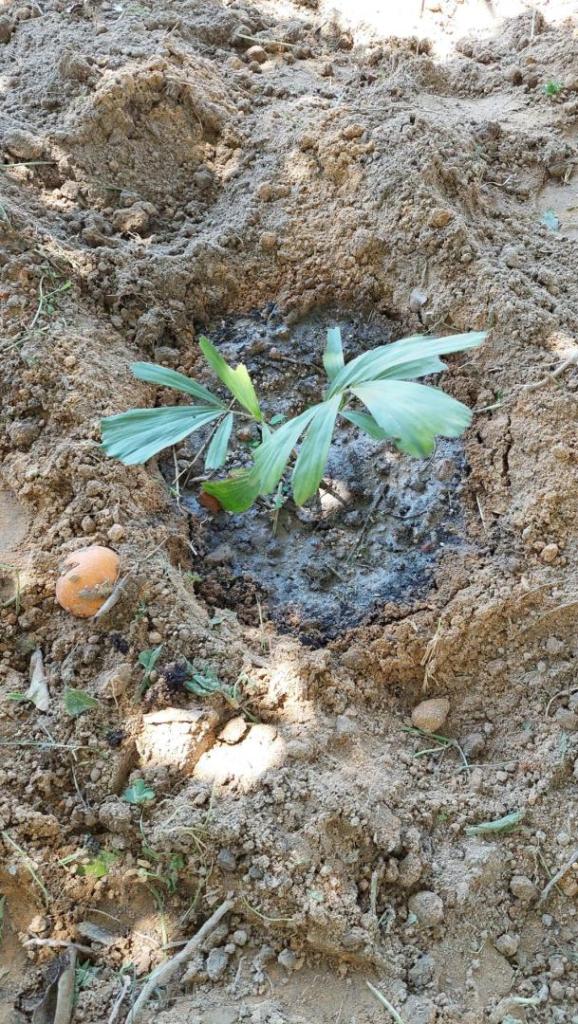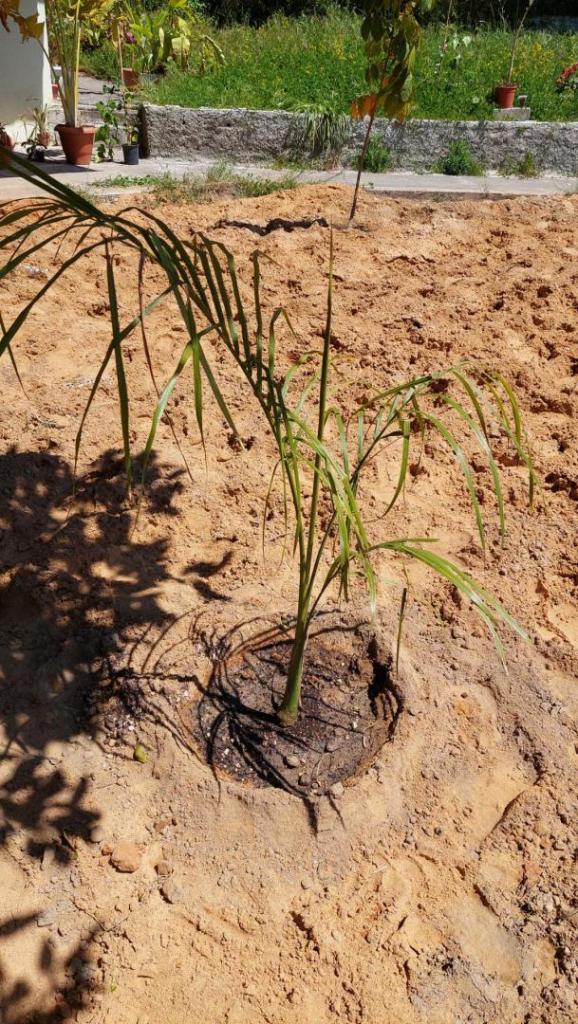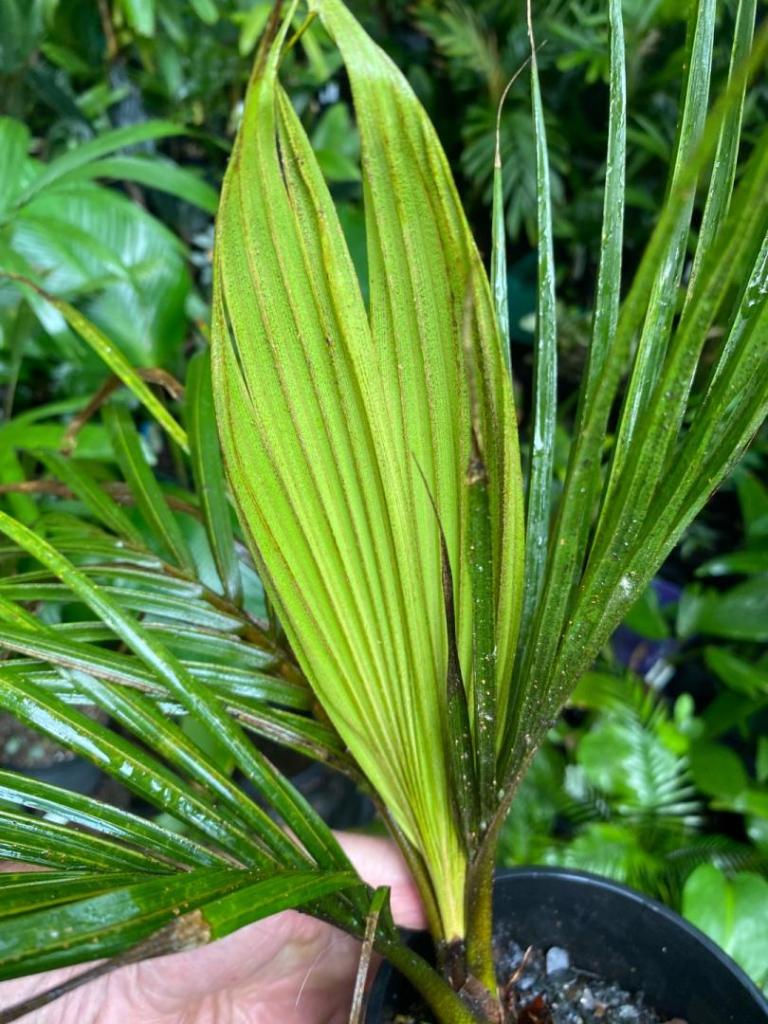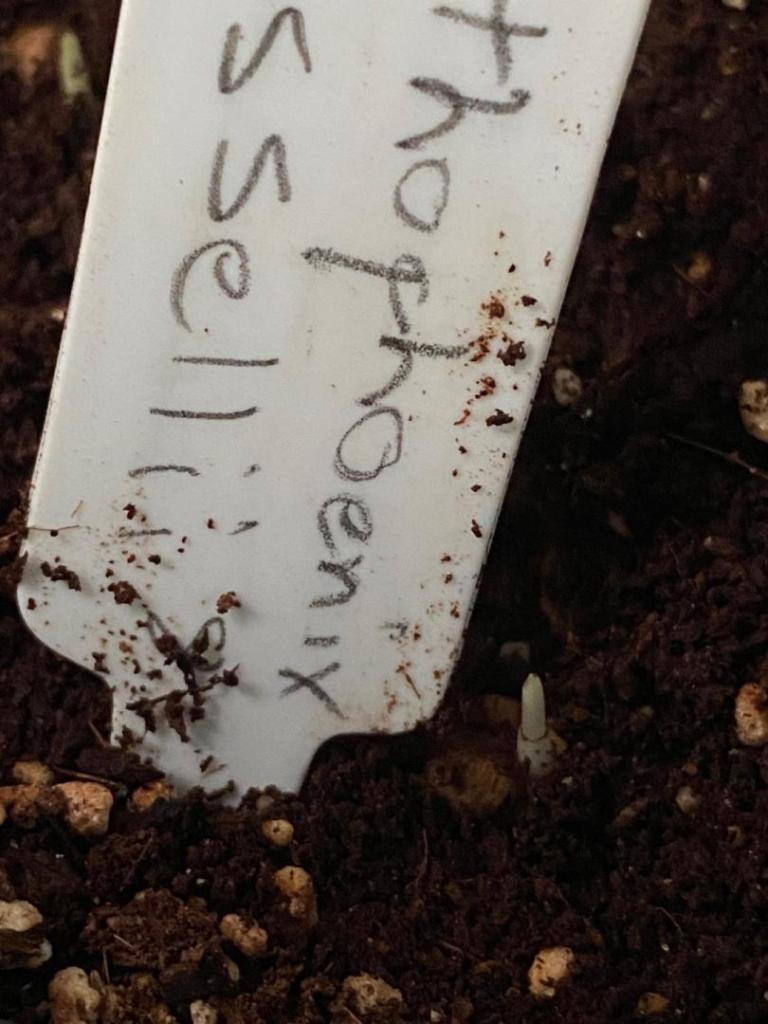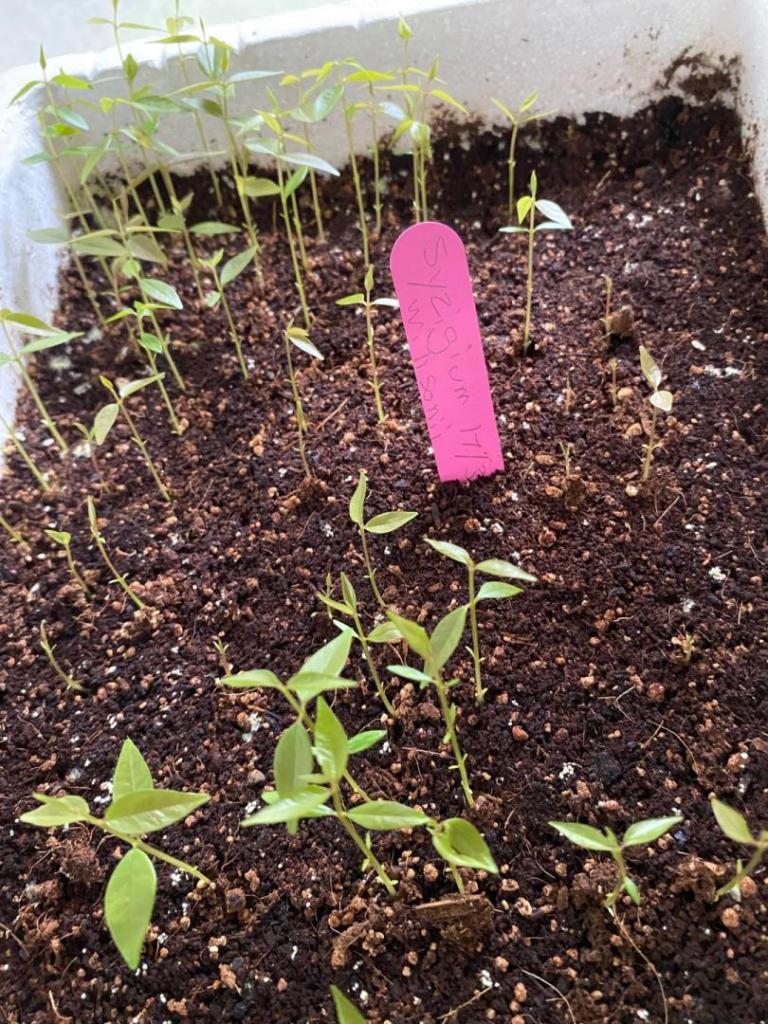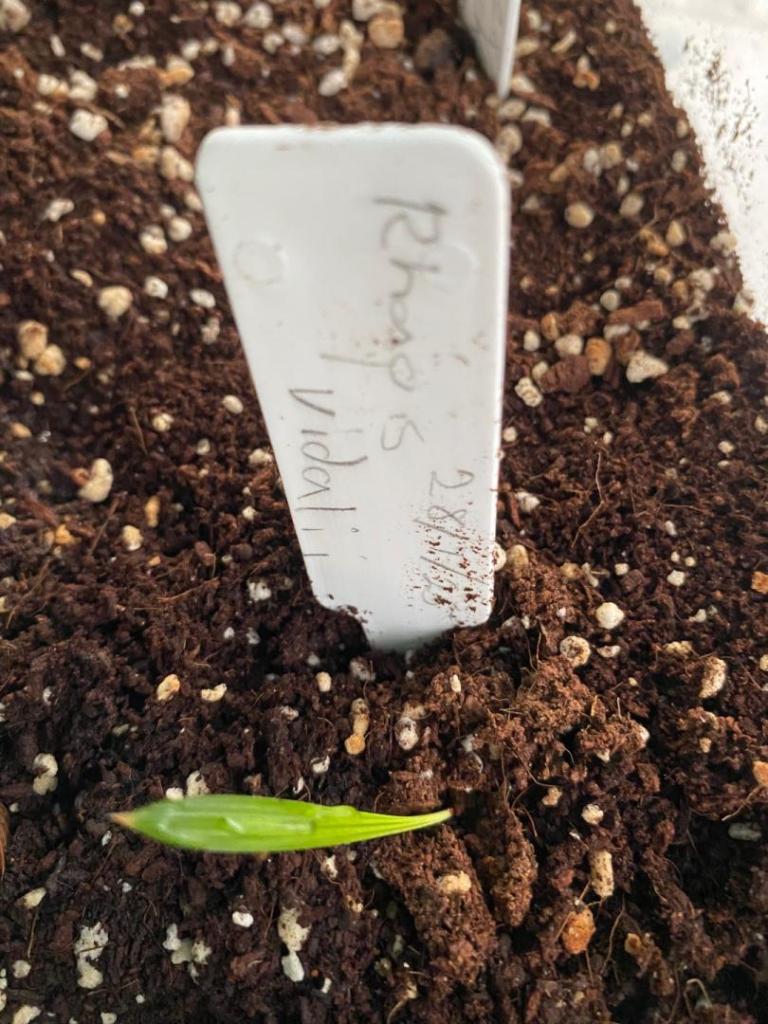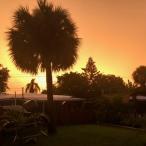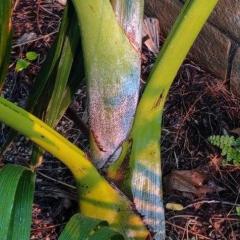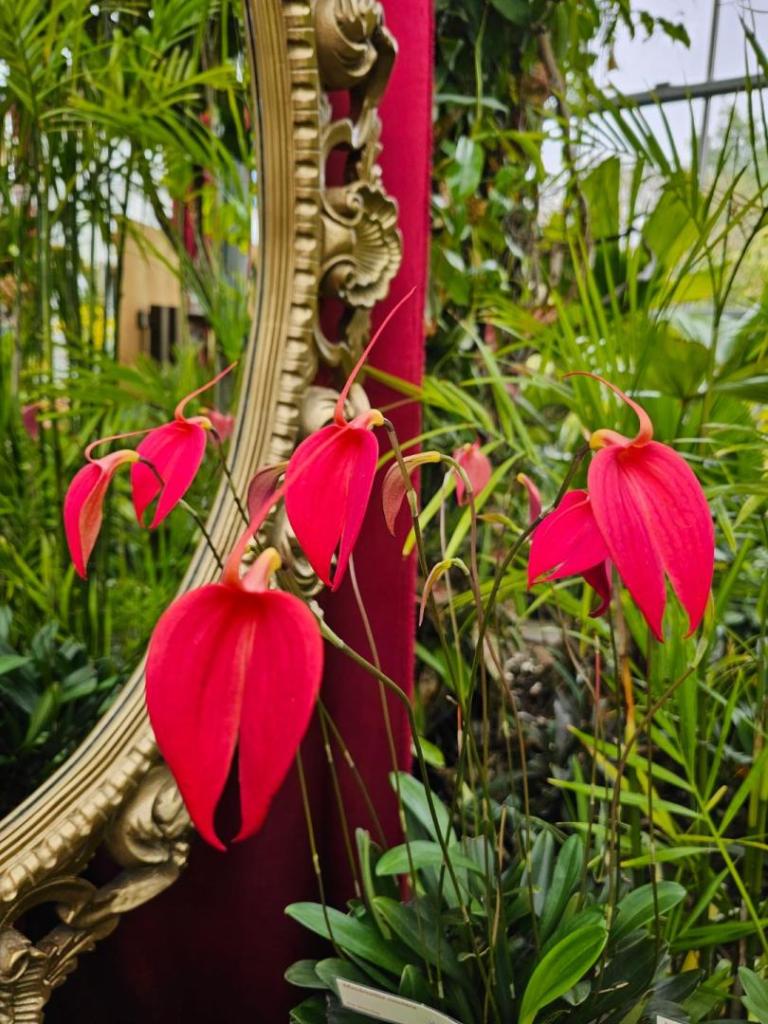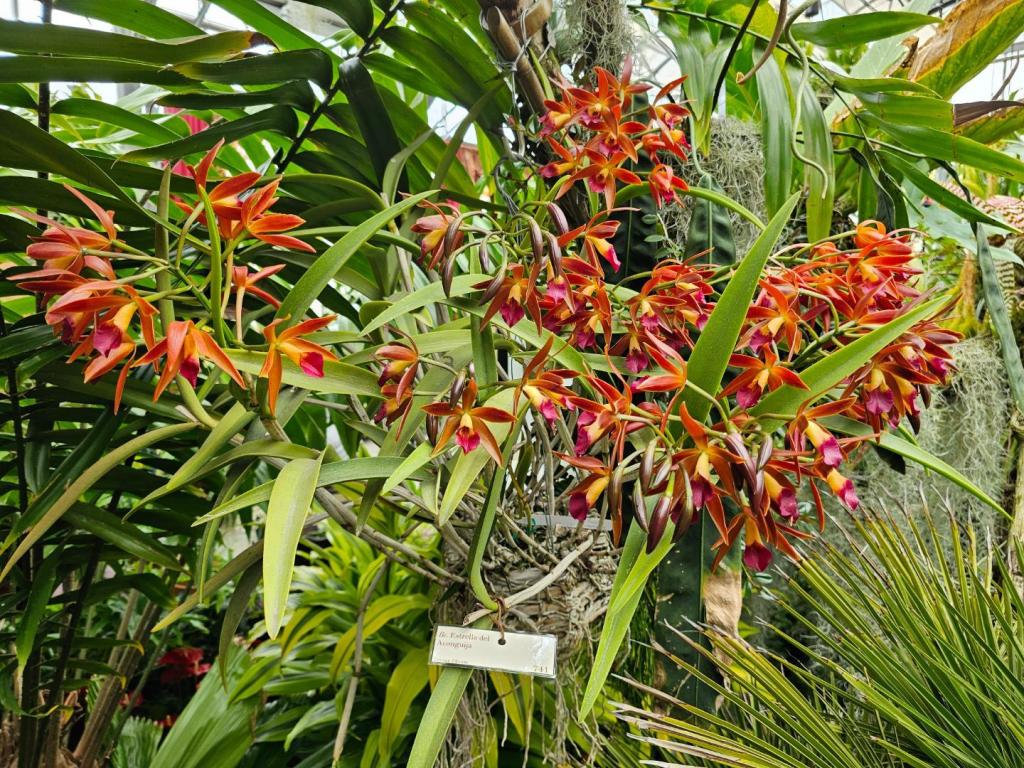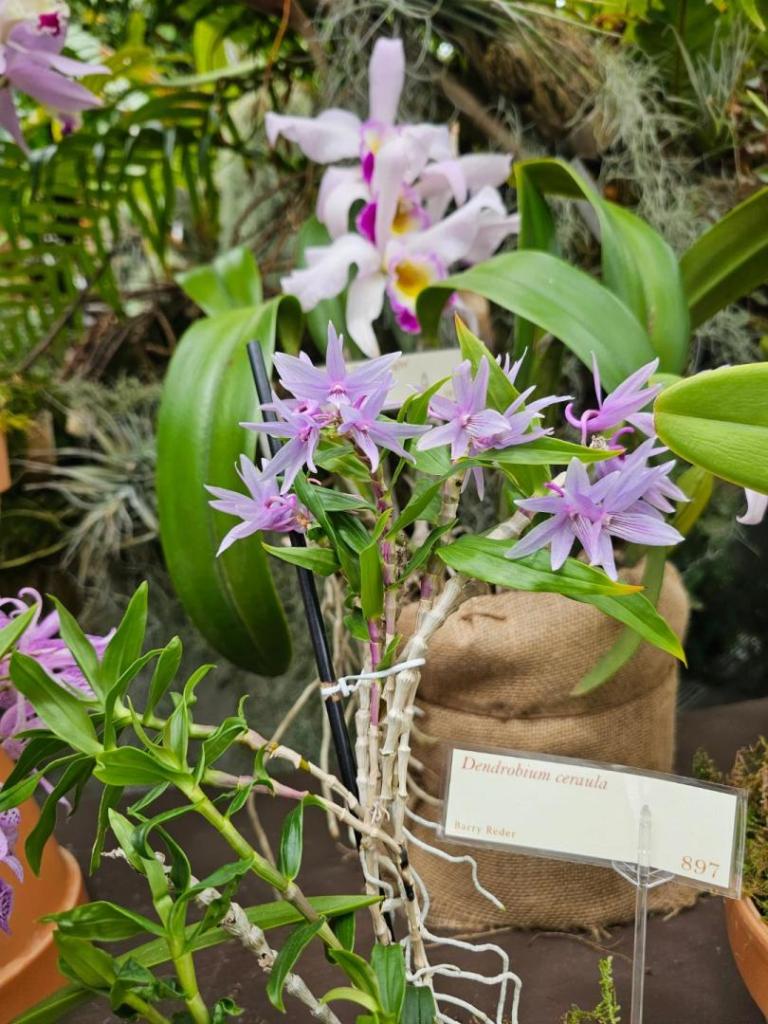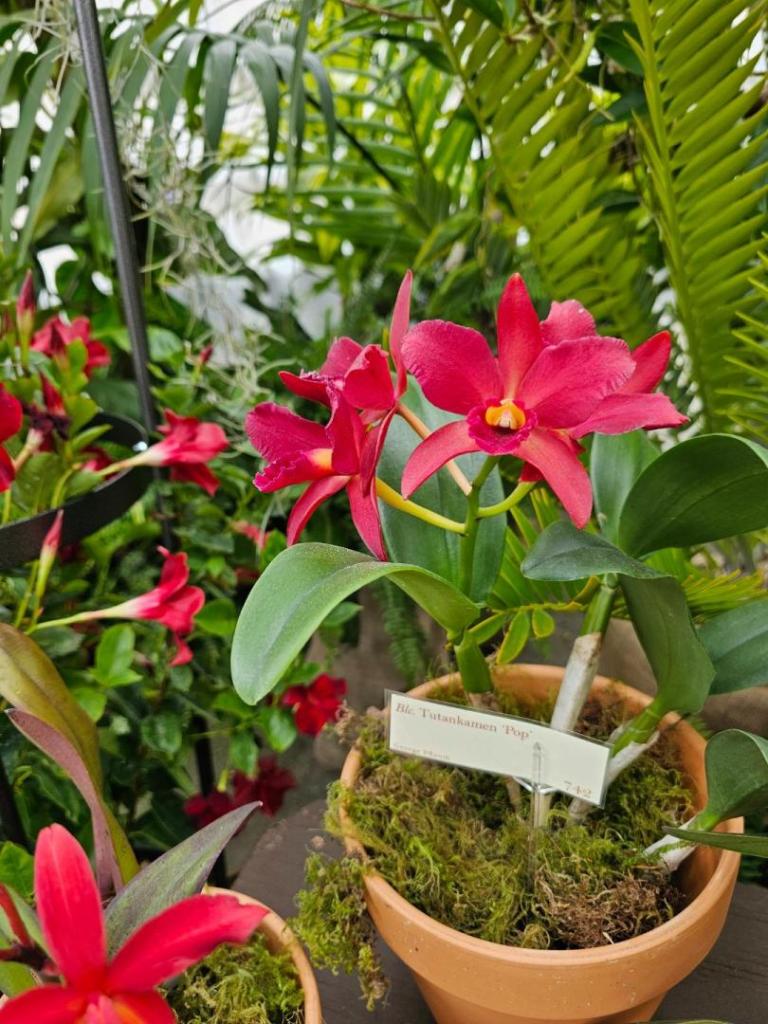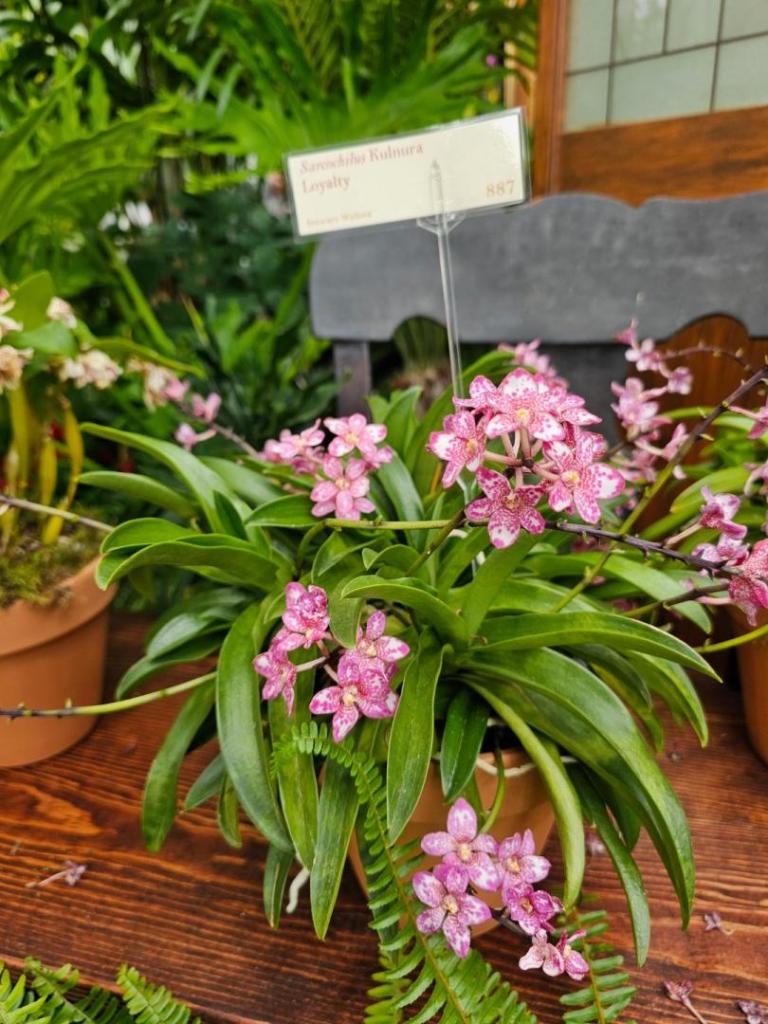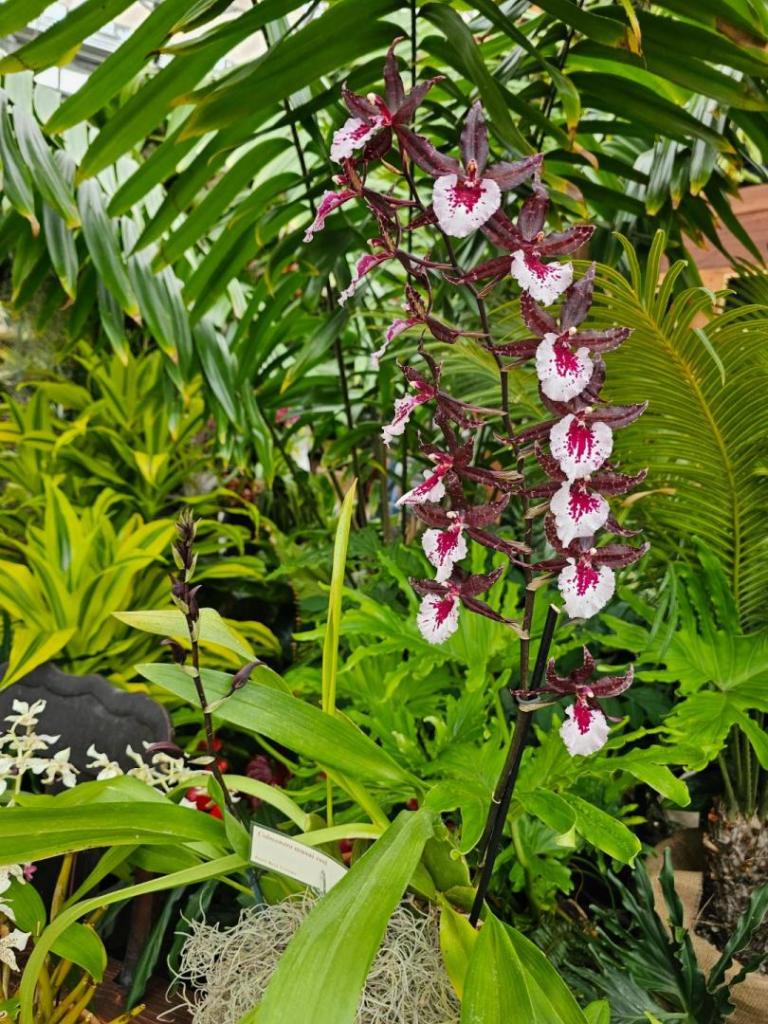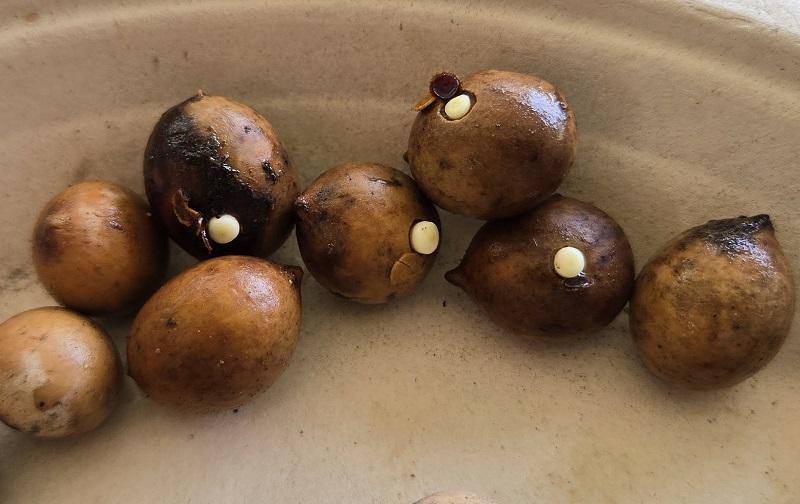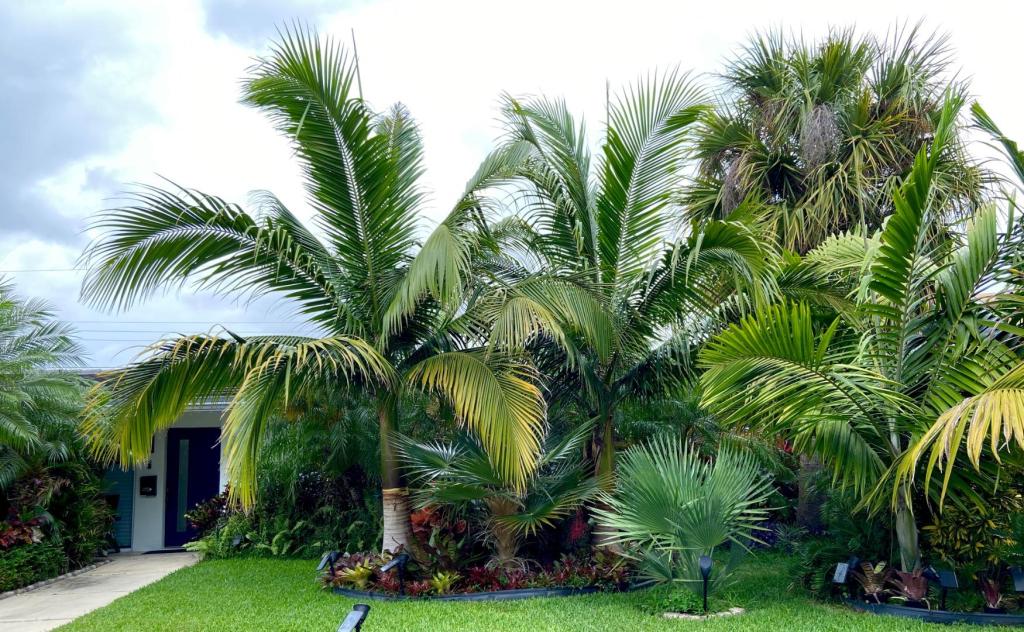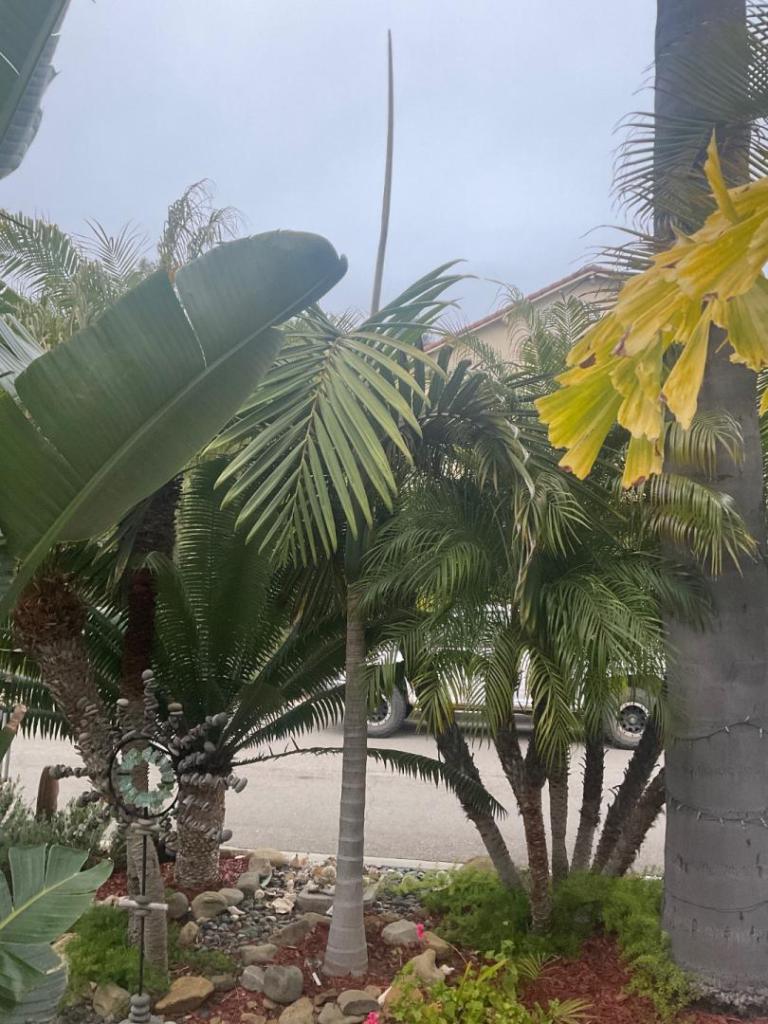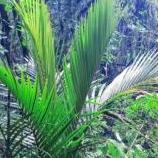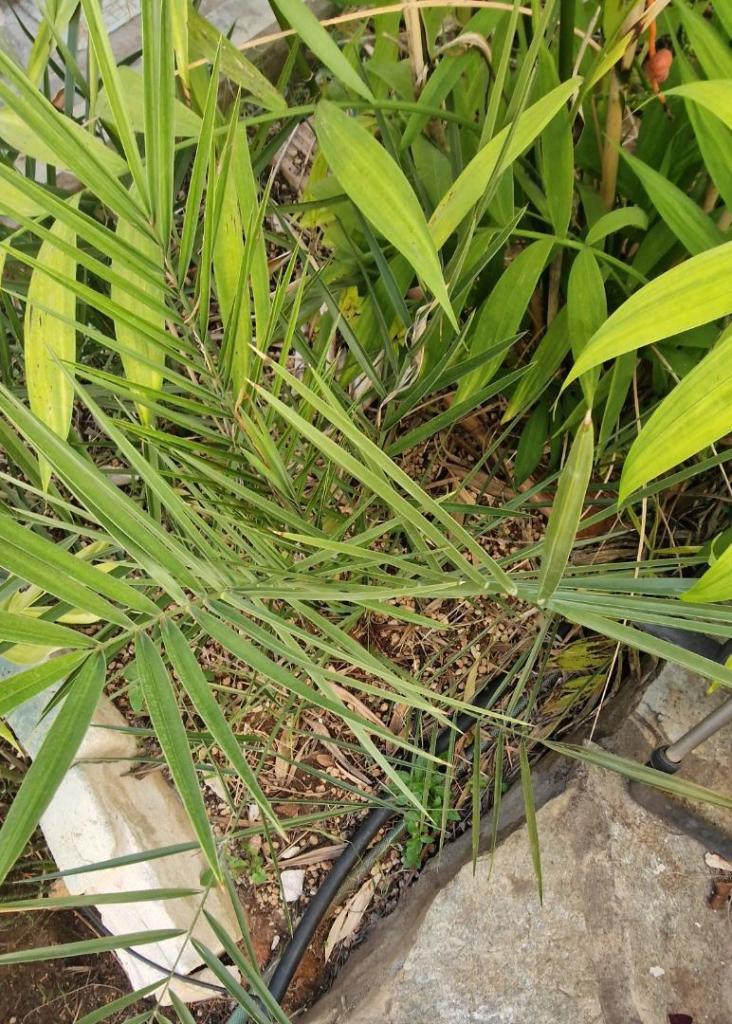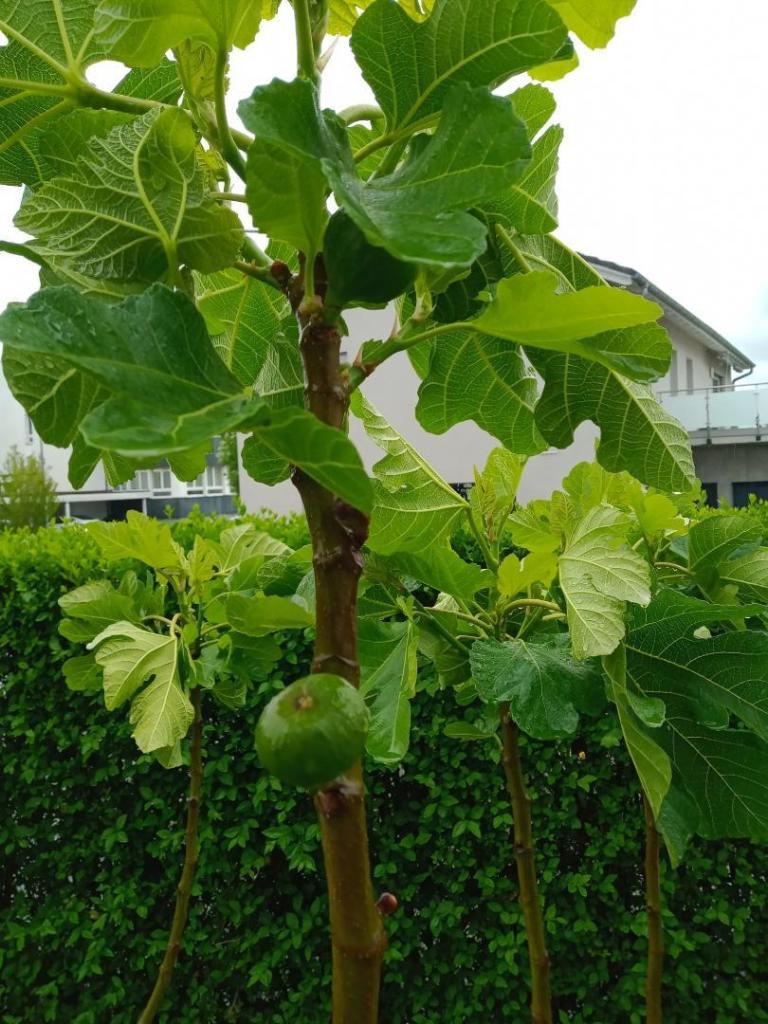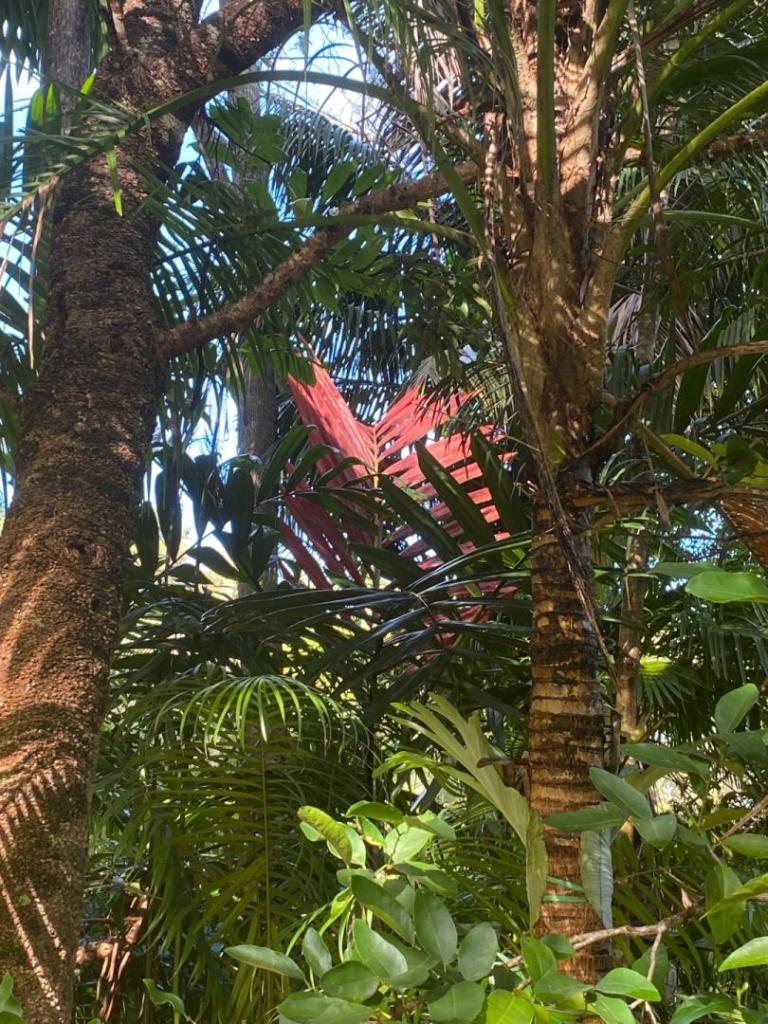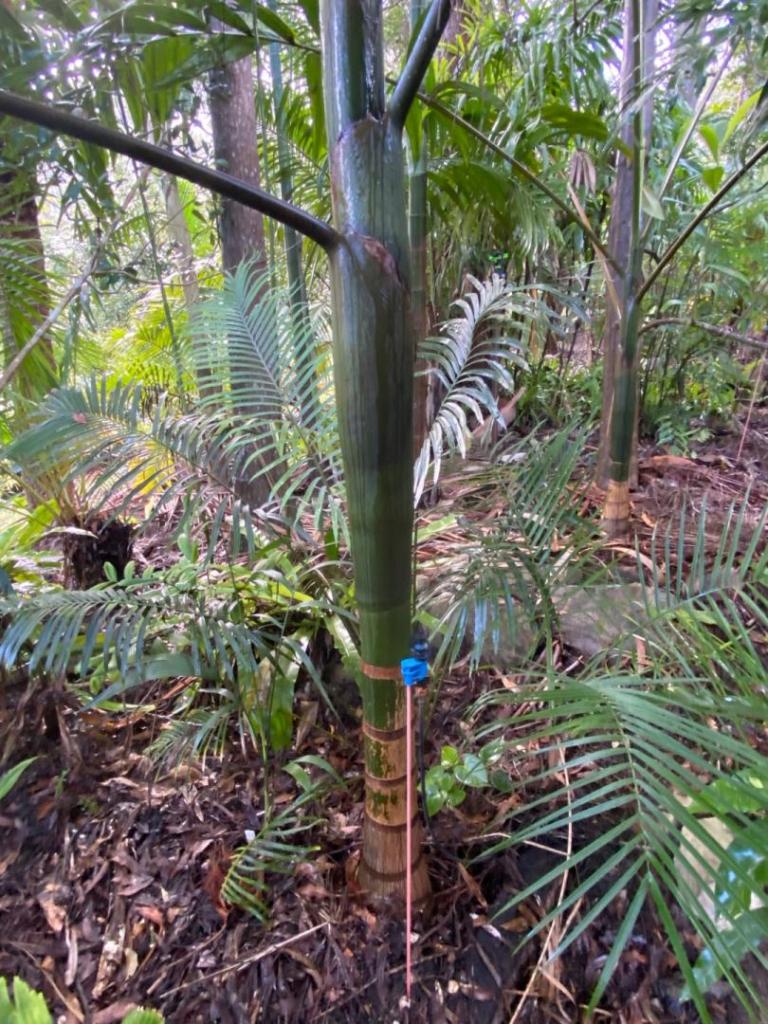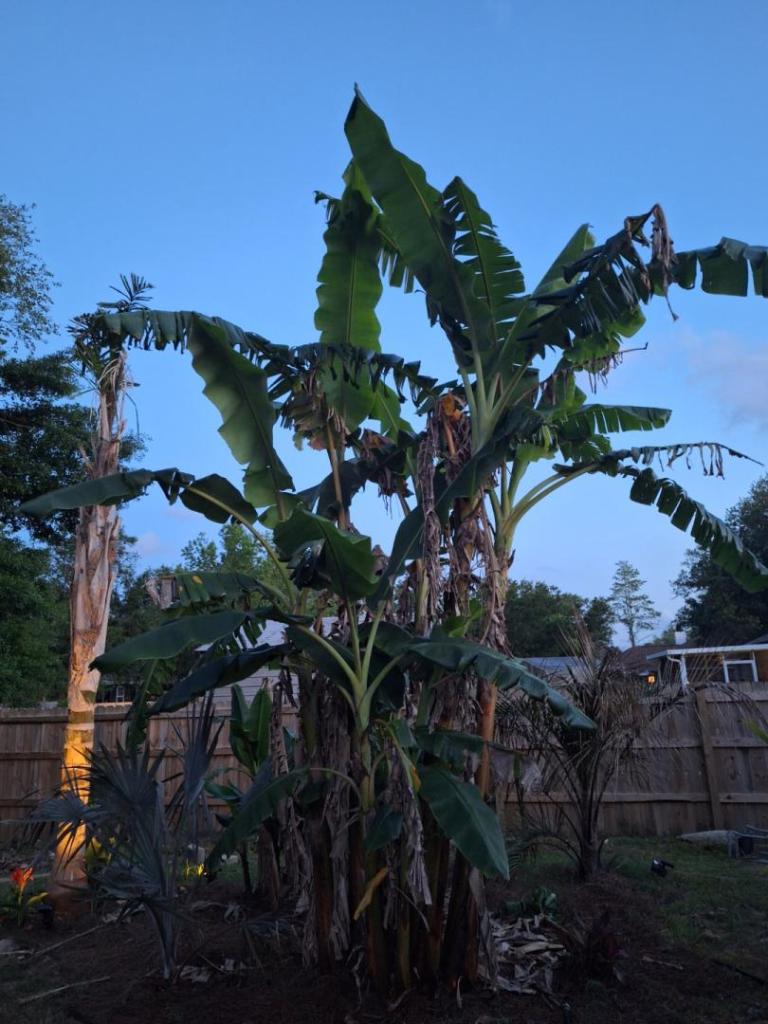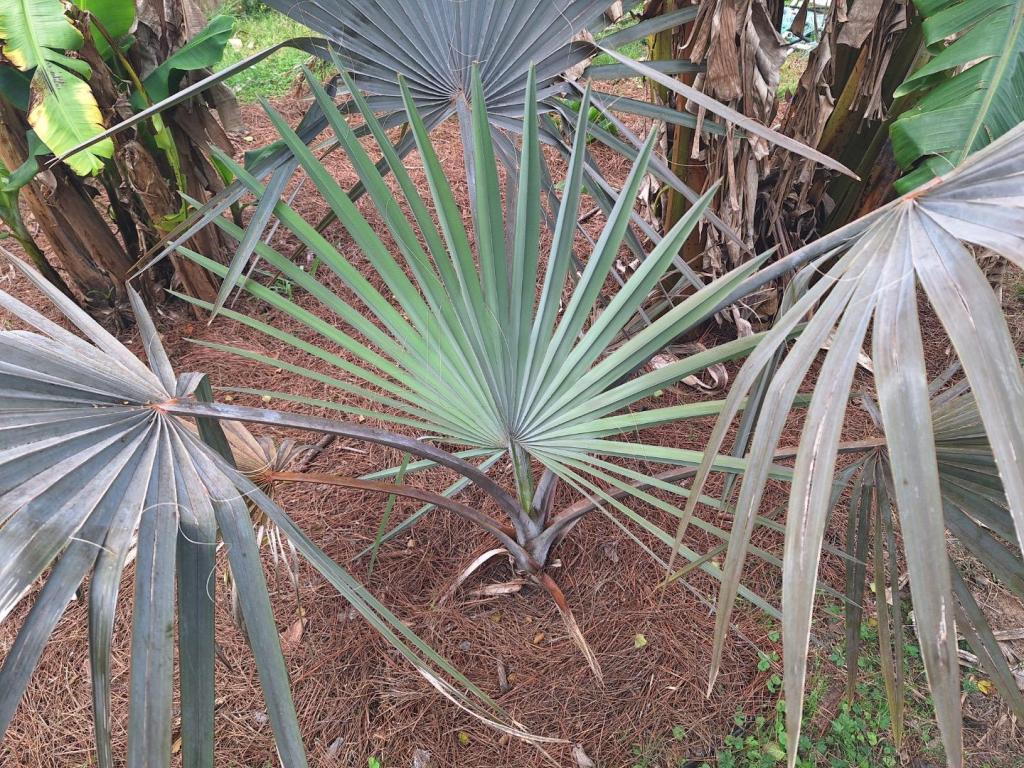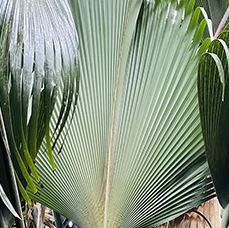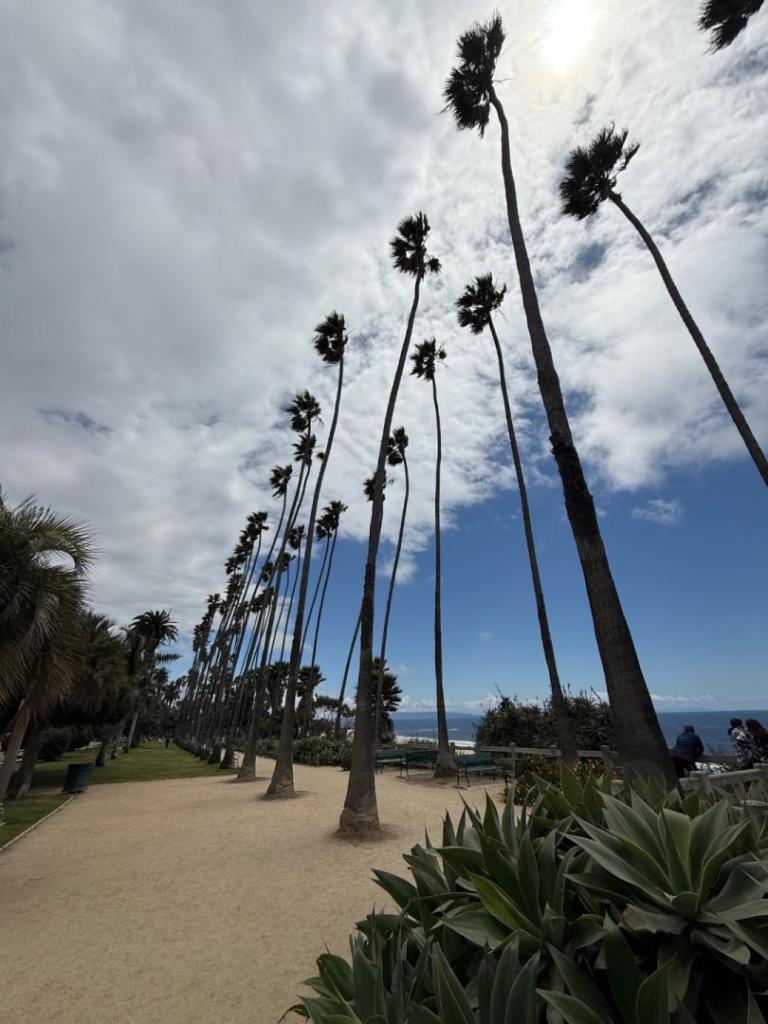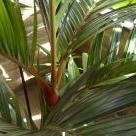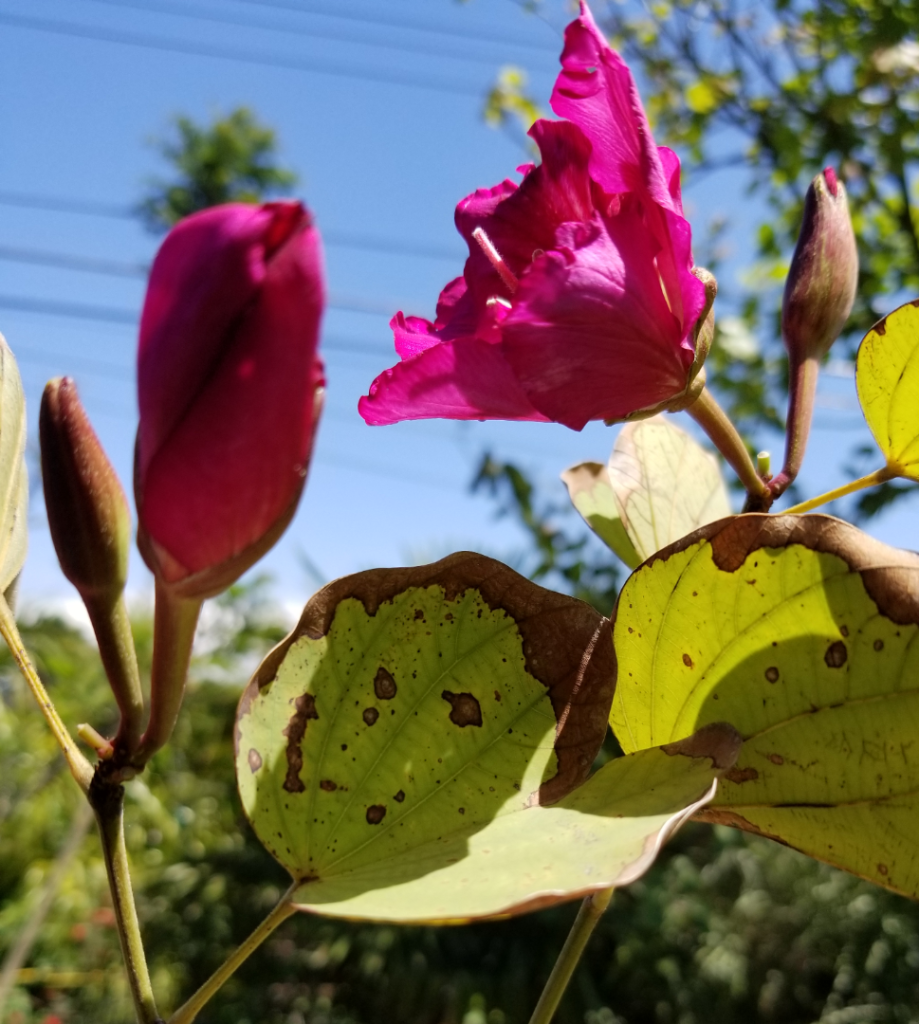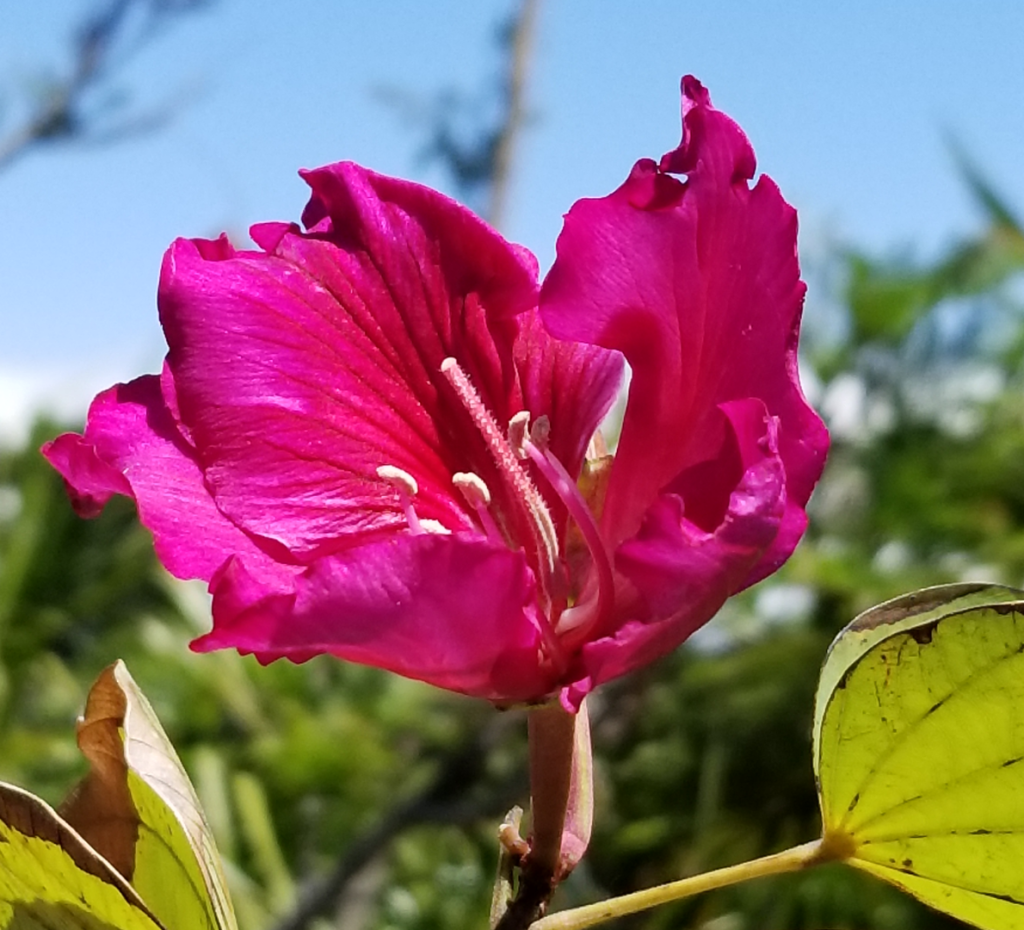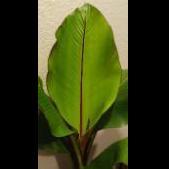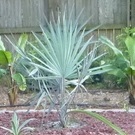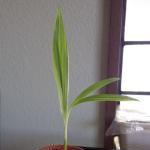Leaderboard
Popular Content
Showing content with the highest reputation on 05/05/2025 in all areas
-
7 points
-
Chamaedorea - Take 2 Some of the Chamaedorea in the garden weren't doing well in their current placement. Lowe's had 2 x Chamaedorea cataractarum in @Palmarum's patented "Cart of Sorrows" that looked like they weren't too bad off. I took those, a Chamaedorea radicalis, and the Chamaedroea microspadix and Chamaedorea tepejilote from the lower yard and packed them into this bed with the sea grapes, bananas, and Thrinax radiata. Sabal minor 'Emerald Isle' reunited? The best Sabal minor 'Emerald Isle' was on the other side of Sea Grapes from the Chameadorea area above. The other two were in other planting beds. They were moved beside their friend. If they survive the move, this will be one thick bunch! Finally Flowering! The Sabal etonia 'miamiensis' are now flowering! That's all for now.6 points
-
The time has finally come, after years of waiting. Today I planted the first palms (and other plants) in my new garden. Since the local soil was very alkaline, I added two truckloads of highly acidic sand soil (pH 3,8) I bought and then i mixed it with the local soil. Hopefully it will work. There is very little organic matter in it but I put worm castings on top of the soil every time I plant something and I will keep adding compost from my compost maker. So here are my pioneers. I know that some of them will not make it but some may do and I am very excited!5 points
-
5 points
-
5 points
-
4 points
-
Two different varieties both pretty well much identical as seedlings either a very slight difference. The var sallehana has more of silver underside than the incisifolia. These one are cool tolerant surviving two winters going into a third winter and growing strong. I already have three in the ground growing well once they got there feet tucked in, they love water and warmth but seem to relax a bit in the cooler weather. Definitely looking forward to seeing them grow into something a lot bigger over the years. You could be fooled into thinking they are Johannesteijsmannia but only a clumping form. The last picture is the incisifolia var.4 points
-
Two lovely little palms in the collection worth growing if you the years to watch them mature. The sapida iam not to worried about in the cold, the micholitzii the jury is still out time will tell. Both palms have high ornamental appeal and I look forward to seeing that appeal in time even now they speak for themselves as winners.4 points
-
A few more this week popping up and a few late comers along with some good germination rates. First up acanthophoenix rousselli a couple more up. A late Oraniopsis appendiculata, iriatia deltoidea pushing strong, Syzigium Willsoni, a late comer in the rhapis vidalii, a great strike rate with my own alogoptrea arenaria, ptychosperma microcarpum and some heterospathe scitula. I will try and leave them as long as I can in there germination box’s waiting for winter to pass if I can, and try to keep the rats at bay. Once germinated and settled in I will remove them from the heat mats open up the lids and place them aside it’s that simple germinating and in the meantime build another 40 metres of greenhouse all in days work when I get time.4 points
-
4 points
-
My little triphylia is setting seeds again for the second year in a row. Such a beautiful little understory palm or container plant. I will say cool tolerant down to 2 degrees Celsius so worth growing at the bottom end of the subtropical climatic or even warm temperate yet I have no information on that one but it may be possible if your barave enough. If I didn’t purchase this one as a zone push trial I would never have known about such a beautiful licuala variety. There are quite a few cool tolerant licuala out there, once thought that the only one was ramsayi for years achieving the cool tolerant award not anymore.3 points
-
good luck. we all started the same way and how much we all have learned since then. get ready for an amazing journey. just remember for every amazing palm garden that exists, there are hundreds of palms that were killed in trial and error. cheers tin3 points
-
Yeah Rhopalostylis sapida can handle minus 4C which gladly you will never see anything close too, but as mentioned they don’t like high temps. In fact I’ve lost a few Chatham island ones to summer heat, even in shade. The mainland NZ ones seem to handle the heat a bit better and probably the most heat tolerant is Rhopalostylis bauerii from Norfolk Island. They all do best in shade I reckon.3 points
-
3 points
-
3 points
-
The Satakentias always look a little tired after winter, and are currently getting a little beat up by our drought. I’ve slowed down on the fertilizer and water, so they’ve slowed down a bit too, but still pretty fat for 4 years here. There was another episode of spear sadness over winter, but it was way up there and out of reach and again, the palm pushed through it on its own. Roots are now huge and travel up pretty far from the base into the lawn. May 2025…3 points
-
3 points
-
3 points
-
3 points
-
Almost that time again. A few very clear and calm nights coming up, no frost risk but if this was in 3 weeks time.... Palms had a great growing season, really getting sizeable now. Got less protection to do this winter as most palms are getting too big to protect now. Oldest current stalk of banana has just popped out the flower head now - not the best time, see what happens. Last year I was able to leave the bunch on right through winter, brief dips to -2C burnt leaves but didn't affect the bunch.2 points
-
2 points
-
I know that Kew has listed this taxon as synonym to dactylifera. I grow from seed two plants and all I can say, is that they display some differences from common dacty varieties, such as slower growth rate and narrower pinnae which indicate imo a wild origin. Here are mine. The narrow pinnae and the sharp tips are very reminiscent of Phoenix theophrasti. Even when seedlings had a closer resemblance to theophrasti seedlings of same age (narrower eophyll). Here are my two plants in the ground, the one, which is more established, is now producing new leaved with more densely arranged leaflets, which they still remain rather narrow. R seedling of atlantica var marocana L seedling of theophrasti fro Vai. Notice similarity in eophyll's width and difference in the green hue. L atlantica var marocana, R dactylifera var medjool. Notice the difference of width and green hue in the eophylls. My two remained atlantica var marocana in the ground 82 points
-
2 points
-
2 points
-
2 points
-
Recovery has been decent. My namwah banana clump had a trunk that flowered late last summer, and I was protecting all the bananas during the winter as pictured in one of those snow pics. Well, I actually took that structure down one day because bad storms were expected and was also expected to be quite windy that day. Well, the wind ended up snapping the trunk with fruit on it. Whatever. But, at least the excessive cold protection has paid off! Pic taken earlier today of another trunk in this clump. Thinking it’s likely I’ll get another 1-2 trunks in this clump with fruit before summer ends. Luckily fruit from this one will have all summer to ripen and should be ready before it starts to get cold again in October. Here is a pic of the entire clump from a few days ago. You can also see the Queen in the background which seems to be recovering at a decent pace this year. I have installed a drip system in this bed with multiple bubblers scattered throughout the bed. This will help me tremendously in keeping these things as happy as possible through the hottest part of the summer. Oh and because I can, why not throw in a random new bizzy leaf?2 points
-
2 points
-
2 points
-
Peter: Here are the first blooms on the Bauhinia variegata 'rubra' from the seeds you sent a couple of years ago. Very fine color. 😃In my garden this cultivar loses its leaves earlier than my other Bauhinia varieties, but that just means the flowers are more conspicuous! I will move it to a much larger pot soon. My B. x blakeana is a shy bloomer this year.2 points
-
Makes sense. Mine is in the poorest soil in my garden with a Eucalyptus on the nature strip to the west nearby which sucks up all moisture and nutrients. My back up in a pot is doing well. I might not replace it in the same spot.2 points
-
This one is in a raised bed that dries out easier but it is irrigated through the dry times here. Here you can afford to shed the bounteous winter rains for subtropicals that need perfect drainage. Unfortunately it too has tried to flower and do the funky mutant leaf thing but still appears to be growing. Will see if it sticks around for the long term. If not, a Beccariophoenix alfredii will take its place.2 points
-
This one was planted on a mound area with free draining soil but the mound has basically collapsed. The surrounding soil gets wet in winter and the weeds go berserk when that happens. I’m always weeding around it in the wetter months so sun can get to the soil and it’s not smothered. But I must have got busy last winter and they kind of smothered it for a bit and it flowered and put out the funky leaf thing. I treated it with peroxide and it’s still pushing growth but I don’t know if it will resign to being a mutant and just die now. I’m hoping it will put out good leaves again.2 points
-
2 points
-
They will set seeds I have hundreds of them that I don’t worry about. A few of the cold climate growers want a few seeds, being such a cold tolerant palm.1 point
-
Im wishing you the best! Super exciting to get them planted, plus the other emotions as they grow lol. I have been reading that biochar is a great way to add pore space and nutrition, you could add it to the soil before you mulch to help add some goodies and provide a home for good microbes. I'm interested in seeing how it goes over time for you with that soil change.1 point
-
Lovely they are . You have a great climate , subtropical gives you the extra edge in winter plus the humidity needed for a lot of these palms. I am not that much colder in winter , about 38f coldest in winter( usually just low 40’s) , but our long , dry periods would not be conducive for these. This year is very dry at about 35% of normal rainfall. We are coastal desert , warm temperate , but very low relative humidity. Harry1 point
-
I moved here 15 years ago and they were impressive then(3/4 size) so you wont have to wait too long. You could withhold water and slow them down perhaps. My neighbor mentioned a flamethrower would be the way to eradicate them. These are going to get more and more brown till the rains hit. THey are attractive when trimmed up but it seems like the trim lasts 3 months before they start browning again. ANd he has been keeping the footprint smaller(?) by removing trunks that come up on the outside. Seems like a running bamboo but with thorms alll over. Heavy maintenance in full sun florida, make me really appreciate my royals archies and chambeyronias ets., that drop their own leaves.1 point
-
Time to get the chainsaw out the one with a ten foot handle and stand back and cut away till you’re heart’s content. Good luck even if you look at them you get scratched.1 point
-
@TropicsEnjoyer my nickname is Merlyn and I am a plantaholic. I basically quit buying "big" stuff at least a year ago, but somehow I still have 38 full sun or bigger sized palms in pots...and only 3 small spots remaining to plant any of them! My other stock is 39 understory palms, 21 understory cycads, and 6 full sun cycads. @kinzyjr this week's work was finally cleaning up the area outside my desk window. It was WAAAAY more difficult than I expected, because I had two queens here with 11ty billion roots. I filled up 3 big trash cans with just roots. The biggest problem was that it was graded backwards in two directions: water ran from left to right towards the patio...and water ran towards the house from the Bottles! This took about 11 wheelbarrows of dirt removal to go from this mess on Tuesday: To this correctly graded and mulched fix today. The dirt now grades down to the left about 2 inches from the patio, and grades away from the house ~2 inches from the wall to the edge of the blocks. I still need to clean up the blocks, put in stone around the 2 Bottle and Cycas Multipinnata "raised islands" and cover with my standard cypress mulch. The raised islands are about 3 inches above the surrounding dirt. I decided that I was not going to dig out the palms and cycas and replant them 3 inches deeper. It would be a lot of effort and a good chance that one or more of the three would end up dying. So from R to L this time is a small Cyphophoenix Nucele, the existing bigger Bottle, a Zamia Nesophila, another Bottle, a Cycas Debaoensis (very, very likely a Multifrondis hybrid), the existing Cycas Multipinnata, and a Ptychosperma Schefferi (that *might* be a Macarthurii): From the side I kept everything at least 6' from the wall:1 point
-
For years I was not giving it the water it wanted so , even though it was very large and grew rapidly it looked , as you say tattered and yellow. After learning a bit on PT I started drenching it nearly every day and I gave it some organic fertilizer (magic dust 😂) . The fronds are larger and dark green but still get stripped by the wind . The difference in leaf texture between the Ravenea and the Howea is night and day . The Howea just cruises through the 90mph wind , the Ravenea looks like a bad hair day afterwards. Heartbreaking! Harry1 point
-
This thread should somehow be linked with the current thread in PalmTalk "Discussing Palms Worldwide-Furthest Coconut from the Equator". Axel posted a picture of a Coconut palm in Malaga, Spain that is thriving but in a pot at 36.8 degrees north. "The Maltese Coconut Project" pictured a planted and surviving Coconut at 35 degrees north, which I would nominate now as the leader in clubhouse if it were less yellow, which may get better as it grows. I still believe, with no disrespect to Maltese, that Stelios's coconut in Cyprus, at 34.8 degrees north, constitutes the current leader! Maurice's green thriving coconut, in the pot, in the islands of southern Greece at 36 degrees north is the next truly viable candidate. Axel made a point about "variety" that got my attention. Specifically, he pointed out the difference between the tall variety and the variety commonly grown that I believe Maltese is growing, which has proven to be more cold tolerant. To that point, the La Quinta coconut (33.6 north) and prior Newport Beach coconut (33.6 north) were both Talls. I wonder if Stelios and Maurice happen to have Talls or that their microclimates make variety unimportant. To all these points, please find: https://www.palmtalk.org/forum/topic/9024-coconut-growing-farthest-from-equator/?&page=12#comments1 point
-
You do not hear much about them in Florida, where they are indigenous, because they are almost as common as our Sabal! It would be no different for you in Australia to constantly write about your beautiful but indigenous Fan palms! We are always looking for that unique variety of palm in our area that is uncommon. That stated, the Paurotis palm is stunning, and not to be dismissed (Acoelorrapphe wrighii)! Where they came up with this name is an enigma wrapped in a riddle! Great palm and great to see it's proliferation worldwide!1 point
-
One of mine produced a premature terminal inflorescence too last year, then died. It was in full sun and the medium would regularly dry out. My other 2 only receive morning sun, are irrigated daily, and look pristine. It seems stress sets them off.1 point
-
This Maltese Coconut is surviving but not necessarily thriving. That stated, it is arguably the furthest from the equator. However, in all honesty, Stelios's trunking coconut pictured in the Weather thread (Greek Islands/pg.18?) in Cyprus at 34.8 degrees north is thriving and Maurice (movielovecan) at 36 degrees north is soon to be a real player. For comparison, the La Quinta coconut, which is by all means thriving, resides at 32.6 degrees north. Lots of competition, which is inspiring to all!1 point
-
How did this go Tyrone did it pull through?? Im in geelong in victoria I know wet and cold winters and mines never been fussed not the fastest thing but after 10 years in the ground it's really picked up the pace planted in heavly composted sand been pretty bullet proof have another decent 1 i need to plant1 point
-
1 point
-
1 point
-
Looking great @kinzyjr I don’t see much wear and tear in the photos at least!1 point
-
1 point
-
A beautiful palm - I am glad that it turned out well! When I started to grow palms here on Miyako in Okinawa I had no interest in indigene palms but I got to admit that the Satakentia species is definitely a (very) beautiful one. With experiencing a couple typhoons and other threats (rhinoceros beetle) I have changed my mind and started to grow them, too. They are storm-proof, immune to beetle attacks and looking spectacular - so why not growing them... I am glad that I have one already beyond seedling stage - they are never offered here in nurseries - and I am impressed about its speed of growth. Max. four or five years from seed, I bit rattled after two typhoons but throwing constantly new spears. Happy to have it! Lars1 point





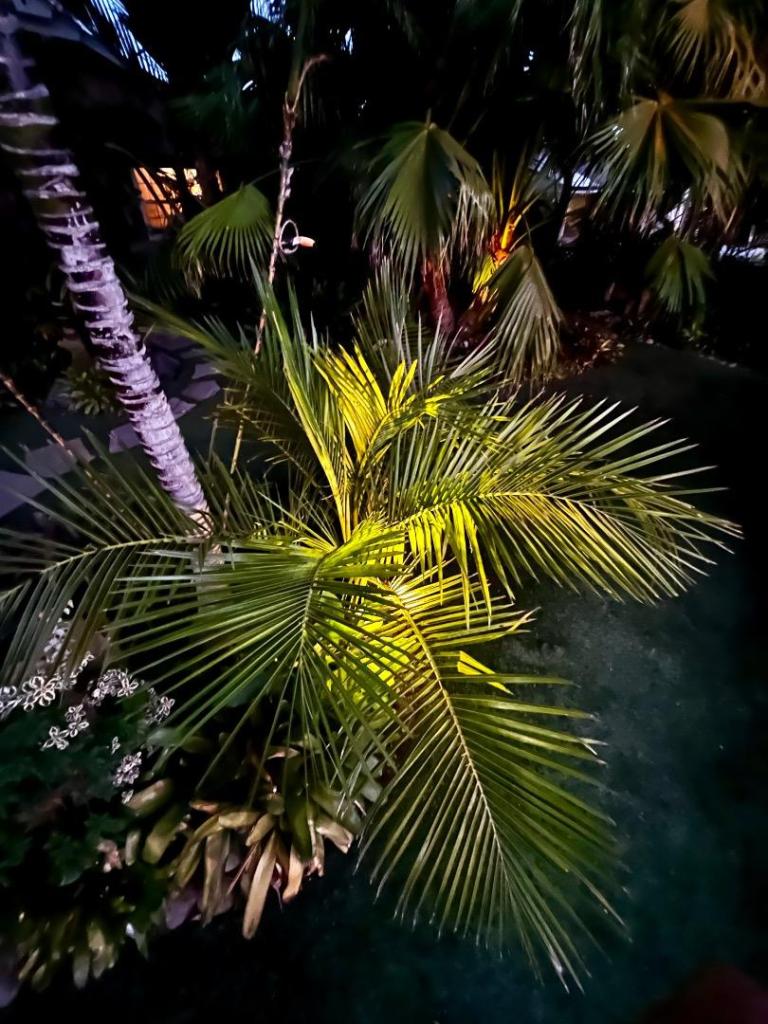




.thumb.png.04b3487b96ff29c55b8a8994b91f62b2.png)


